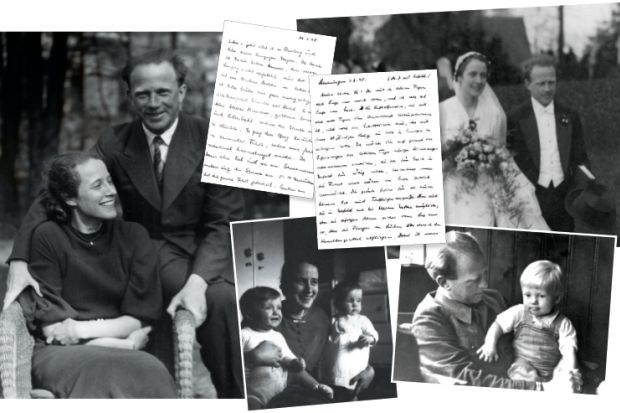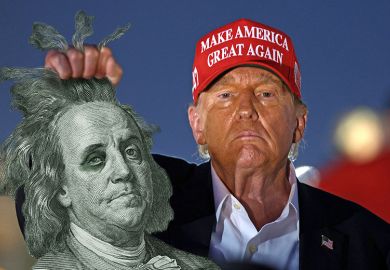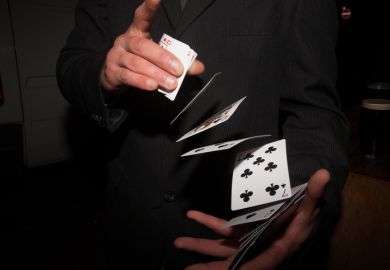In 1925, when Werner Heisenberg was 23, he discovered the most revolutionary scientific theory of the 20th century, quantum mechanics. Yet his monumental contributions to science are now discussed less than what he may or may not have done to develop a nuclear weapon behind German lines during the Second World War. Was he trying to forestall any possibility of Hitler acquiring such a weapon, or would Heisenberg have helped to develop it if he had believed that its construction was feasible?
Heisenberg’s story has come under especially intense scrutiny since the National Theatre first presented Michael Frayn’s Copenhagen in 1998. The play dramatised the 1941 meeting in the Nazi-occupied city between Heisenberg and his friend Niels Bohr, who had close connections with British fellow scientists. Frayn demonstrated that the more closely we probe the protagonists’ views, the murkier their intentions appear. This is a classic metaphor for the uncertainty principle that Heisenberg set out in 1927: the more we know about a subatomic particle’s location, the less we can know about its momentum.
The success of Copenhagen whetted the public appetite for every minute detail about Heisenberg’s life during the war. Hence the interest in the extensive correspondence between him and his wife Elisabeth (“Li”), 14 years his junior. The couple first met in January 1937 at a musical evening when Heisenberg – an accomplished pianist – apparently won her heart when he played the largo of a Beethoven piano trio. Four months later, the couple began a happy marriage that lasted 40 years, until his death in 1976.
His letters in this handsome volume give the clear impression that he simply wanted the war to be over as quickly as possible so that he could get back to ordinary life with his family, and to his science. Alas, as one might expect for matters shrouded in secrecy, readers who want to truffle for every last detail of Heisenberg’s attitude to his nuclear work will find that the pickings here are slim.
Anna Maria Hirsch-Heisenberg, Werner and Elisabeth’s eldest daughter, has done a fine job of editing the correspondence, and the English translation by their daughter-in-law Irene Heisenberg is pleasingly colloquial. I was surprised, however, that Hirsch-Heisenberg begins by telling us what to think about what her father really believed about building the atomic bomb: it was “out of the question for him”. He wrote to Elisabeth directly after Hiroshima, she notes: “British and American colleagues…have my sympathy, because their names are now tied to this atrocity.” Other evidence, especially of his recorded conversations with interned colleagues in the UK, suggest that his reaction was much more complicated than the editor’s summary suggests.
Although several of Heisenberg’s closest colleagues refused to believe his version of events, some accepted it completely, including the English theoretician Paul Dirac, who would not hear a word said against him. Dirac told a close friend after Heisenberg died that he realised “how lucky I was to be living in England and not to have had any similar problems”. Dirac’s wife, who also knew Heisenberg well, did not agree: she said that she “would not trust him further than I could throw his grand piano”.
As Frayn implied in the final line of Copenhagen, in both life and in atomic physics, there is a “final core of uncertainty at the heart of things”.
Graham Farmelo is by-fellow at Churchill College, Cambridge, and author, most recently, of Churchill’s Bomb: A Hidden History of Science, War and Politics (2013).
My Dear Li: Correspondence 1937‑1946
By Werner Heisenberg and Elisabeth Heisenberg
Edited by Anna Maria Hirsch‑Heisenberg
Translated by Irene Heisenberg
Yale University Press, 328pp, £25.00
ISBN 9780300196931
Published 22 November 2016
POSTSCRIPT:
Print headline: No bombshells in the post
Register to continue
Why register?
- Registration is free and only takes a moment
- Once registered, you can read 3 articles a month
- Sign up for our newsletter
Subscribe
Or subscribe for unlimited access to:
- Unlimited access to news, views, insights & reviews
- Digital editions
- Digital access to THE’s university and college rankings analysis
Already registered or a current subscriber?




